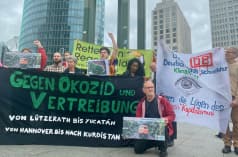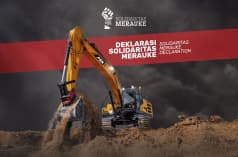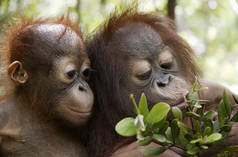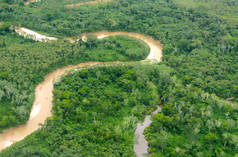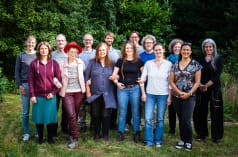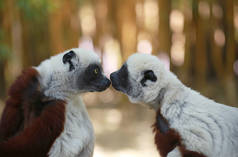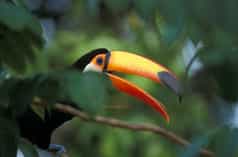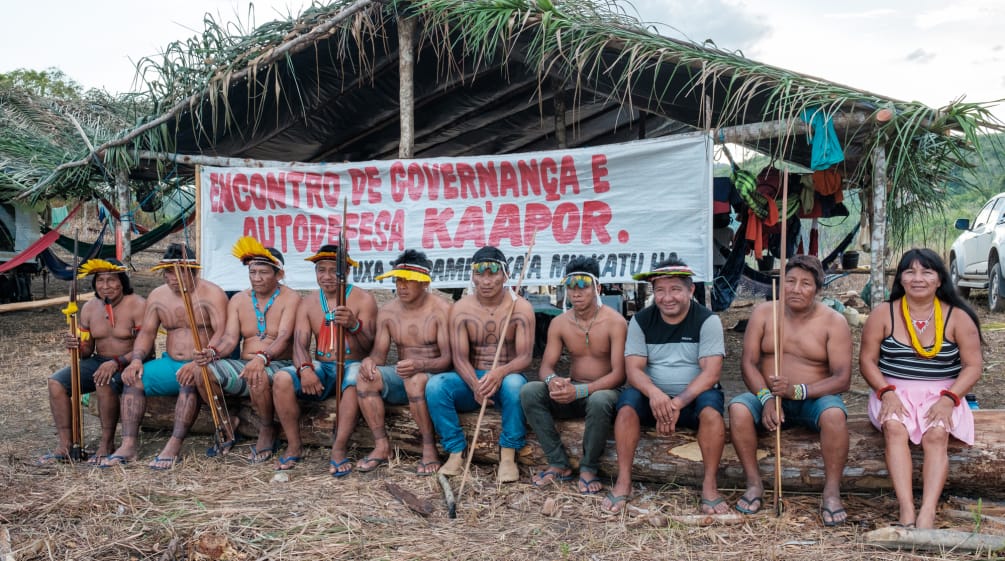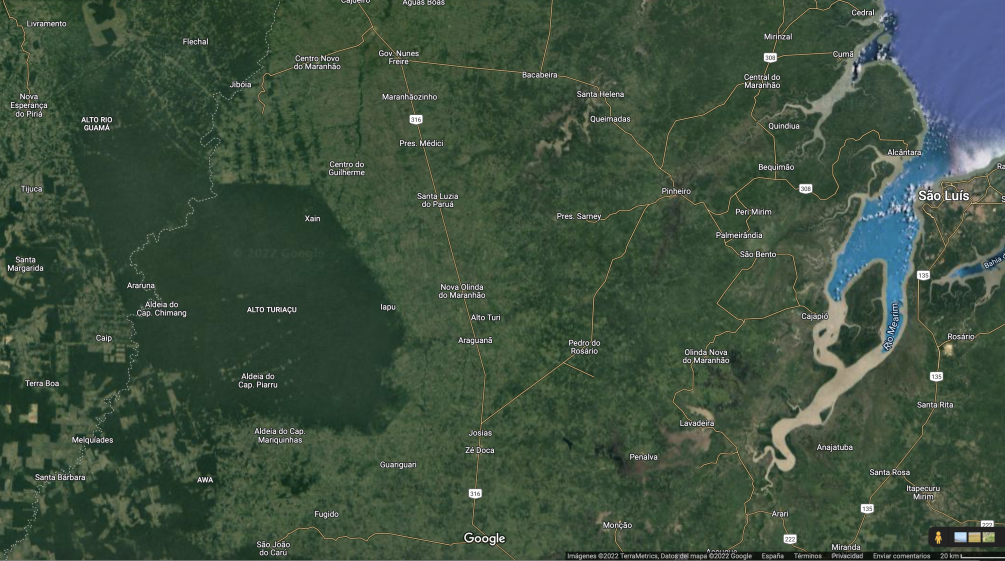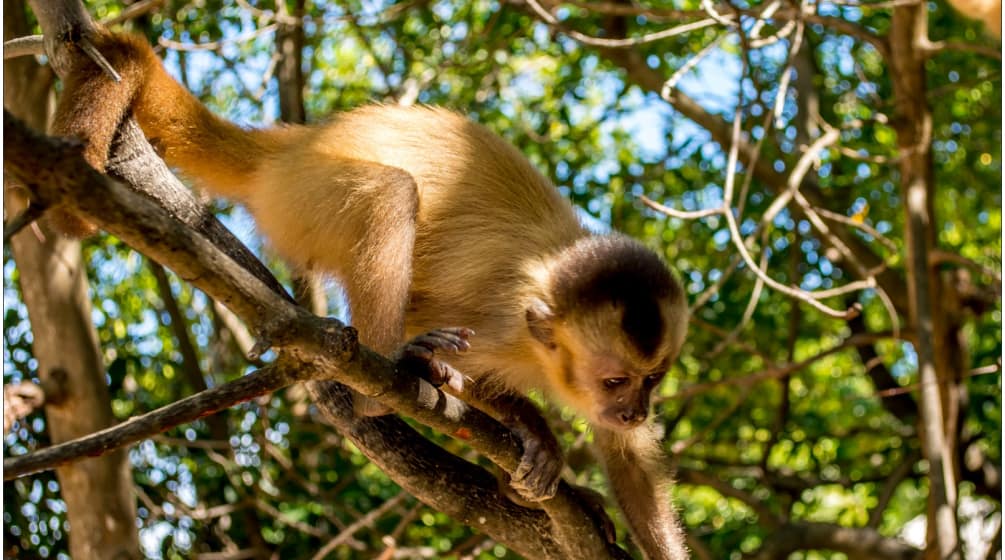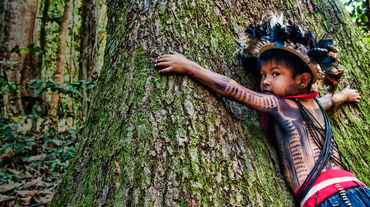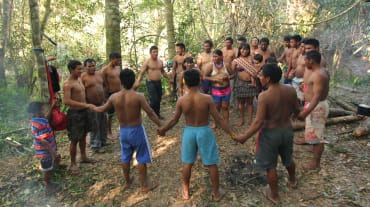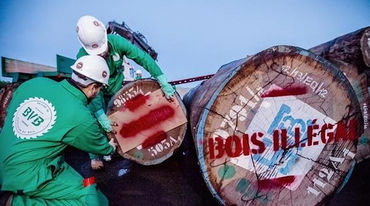Study finds Indigenous Ka’apor are Brazil’s best rainforest defenders
Jul 13, 2023
Deforestation in Brazil has increased dramatically over the past ten years. The territories of Indigenous peoples have also been impacted, albeit to a much lesser extent. Only the Indigenous Ka’apor – partners of our organization – were able to resist the general trend and successfully defend their forest.
Brazilian teams of experts have used satellite data to study the deforestation of the Amazon region over the past decade (2013-2021). Particularly under the former president Bolsonaro, clearing increased sharply. The rate of deforestation varied widely from one region to the next, however, and some areas were even able to resist the development.
Deforestation in Indigenous territories was significantly lower than in rainforest areas located outside of them, according to a study published in Nature in April 2023. Its shows that Indigenous peoples are much more effective at defending nature, confirming the findings of previous studies.
The recent study found that the Indigenous Ka’apor, who we have been supporting in their work to secure their territory since 2021, are the most effective guardians of the rainforest. The Alto Turiaçú region in the Brazilian state of Maranhão not only has the lowest rate of deforestation of all 232 Indigenous territories surveyed, but is also bucking the general trend and showing a declining rate of deforestation – even though the Ka’apor remain under massive threat.
Our partners from the Ka’apor Indigenous Council
As can be seen in satellite images, all of the forest has been cleared for cattle grazing, industrial soybean farms and mining, right up to the borders of their 531,000-hectare Alto Turiaçu territory – an area more than three times the size of Greater London. The officially recognized and demarcated Area of the Ka’apor stands out amid a sea of destruction like a lush, green island.
In order to better fend off invaders such as loggers, poachers and miners, the Ka’apor Council has developed a range of activities and strategies: Groups of young Indigenous people patrol the area and apprehend intruders. With the support of Rainforest Rescue, the Ka’apor have surveyed their territory and divided it into different protection and use zones. Settlements were also moved from the interior of the area to strategic points on the outskirts, allowing the Indigenous people to detect and repel intruders early on.
A summary of the project's progress (in Portuguese) with numerous maps, tables and photos can be found here.
Indigenous peoples and rainforest conservation in Brazil
About 700,000 Indigenous people live in Brazil’s 732 officially recognized and demarcated Indigenous territories. More than half of these areas are in the Brazilian Amazon and cover an area of almost 1.2 million square kilometers of rainforest. These territories not only ensure the survival of Indigenous peoples and help preserve their knowledge of nature and their unique cultural diversity, they are also of outstanding importance for biodiversity, carbon storage and stabilizing the global climate.
published in NatureSilva-Junior, C.H.L., Silva, F.B., Arisi, B.M. et al. Brazilian Amazon indigenous territories under deforestation pressure. Sci Rep 13, 5851 (2023): https://www.nature.com/articles/s41598-023-32746-7
almost 1.2 million square kilometers of rainforestInstituto Socioambiental 2023. Localização e extensão das Tis: https://pib.socioambiental.org/pt/Localização_e_extensão_das_TIs
